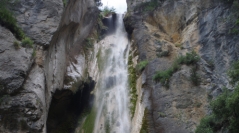

 Naturae
2021 (7) - Pages 79-90
Naturae
2021 (7) - Pages 79-90The Habitats Directive is the first normative document that has ever defined the notion of “conservation status”. The objective is to maintain or restore the habitats of Community Interest in a favourable conservation status. These types of habitats are listed in the Directive (Annex I). Thus, a network of protected areas called “Natura 2000” has been established. Special Areas of Conservation (SACs, Habitats Directive) and Special Protection Areas (SPAs, Birds Directive) form this network. In France, the Directive was transposed in the Environmental Code. The operators (experts, site managers, etc.) shall assess the conservation status of the habitats of Community Interest within each Natura 2000 site. The management plan must include the results of the assessment. In order to achieve the objectives defined by the Directive, the French Ministry of the Environment has assigned the French National Museum of Natural History with the task of elaborating methods to assess the conservation status of all habitats of Community interest at the scale of Natura 2000 sites since 2008. The methods should be standardized, pragmatic, affordable and easy to apply. Several reports had been published about forest, agropastoral, coastal, marine and lagoonal habitats. The first method dealing with terrestrial wet habitats was published in 2013. Then, other methods were set about standing waters, acid raised bogs, alkaline fens and Atlantic wet heathlands. Work is currently going on petrifying springs. The purpose is to create a series of grids to assess the conservation status of all wet habitats types. These grids are based on the assessment of three parameters, which are the surface, the structures and functions, as well as the deterioration factors. For each parameter, some criteria are selected and subsequently assessed with a set of indicators. For all the studies, a bibliographical research allows to preselect some indicators. Then, experts and site managers validate the lists of indicators to test in the field. The indicators are compared to an expert view on the conservation status of the habitats. The aim is to select only the indicators that correspond the most to the expert view. The testing phase leads to the definition of some thresholds to the indicators that correspond to the values at which the conservation status is considered to be “favourable” or “unfavourable”. The testing phase takes place with the support of national botanical conservatories, conservatories of natural areas, other experts and site managers. Finally, statistical analyses allow to deliver initial results, which must be validated by the experts and the site managers before constituting a first proposal of assessment grid. The methods can evolve thanks to the feedback of users. Nowadays, 98% of all wet habitats of Community Interest present in mainland France are covered by at least a first proposal of indicators.
Habitats Directive, Natura 2000, Environmental Code, Site management.